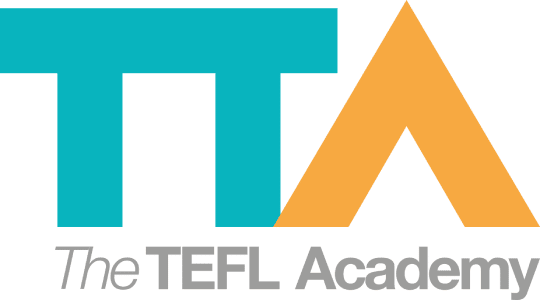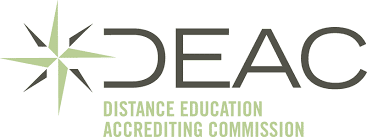Encouraging Mistakes In The TEFL Classroom: Effective Error Correction
Join a global community of over 200,000 TEFL teachers working throughout the world! Enrol me!
What is error correction in the TEFL classroom?
When you’re teaching English as a foreign language, there may be some moments when you despair of both your teaching and your students’ learning abilities!
Lessons when it seems like your students are making more mistakes than they’re not. And it feels like all your lesson planning and preparation -and your teaching skills and techniques – are in vain.
But aren’t the sounds of English mistakes exactly the sounds you want to hear in your EFL classroom?
After all, if your students aren’t making mistakes then are they really learning new language?
This is why we insist that as EFL teachers it is our duty to encourage mistakes in the TEFL classroom – but engage in effective error correction.
What are mistakes in the EFL classroom?
Let’s back up a step.
What exactly are considered mistakes in the EFL classroom?
There are a range of mistakes an English language learner can make.
They might make mistakes with word choice, pronunciation, word order, subject-verb agreement and grammar, just to name the usual suspects.
Mistakes which students make because they are not familiar with the language or are still in the process of consolidating the language into their interlanguage, are often called errors.
But there are other mistakes which our students make even though they know the language.
Mistakes like these include the omission of the third-person –s or the wrong word order when it comes to adjectives and nouns. They might make these mistakes from fatigue or anxiety or habit.
Why should we encourage mistakes in the EFL classroom?
Mistakes are evidence of learning and opportunities for learning.
A learner who makes a mistake is taking a chance and pushing themselves and their language production.
If a learner plays it safe and uses only language they are comfortable with, then they won’t make mistakes.
If a learner attempts to use new or unfamiliar language, they are a likely to make a mistake in their language production.
This shows that they are pushing themselves to the limits of their capabilities.
The mistakes learners make show the teacher the current language level of the learners: The mistakes identify
- what language the learner knows,
- what language the learner can produce,
- what language they are still struggling with,
- and the gaps in their knowledge.
This is valuable information for teachers so they know:
- what language needs to be practiced,
- what language needs to be introduced,
- and what language can be accepted as a part of the students’ language.

Are all mistakes “good” mistakes?
Having said all that, we do need to draw a line.
What we refer to as good mistakes are errors. What are not good mistakes are mistakes.
It is these mistakes which are not learning opportunities because there is nothing for the student to learn. These mistakes should be dealt with accordingly – by correction, so that they do not become fossilized and a part of a student’s language.
Let’s look at a few of the most common English mistakes learners (and even native speakers!) make and consider why they are problematic.
Its vs it’s
This is quite simple. The apostrophe can be used to designate possession (Mary’s dress) or the contraction of the verb to be (He’s not at home). The confusion comes in with the word it, because in this case the apostrophe is only used to show the contraction of it is. In other words, the possessive form of it is its, which is the exception to the usual rule.
There vs their
There refers to a place while their refers to possession. Here we can only imagine the difficulty is a spelling issue.
You’re vs your
Again a seemingly simple mistake but one that is made again and again. This is also possibly a spelling confusion, though it seems clear that possessive adjectives and pronouns can cause serious issues. You’re is the contraction of you are and your is the possessive of you.
Advise vs advice
practise vs practice
It’s not surprising these word pairs cause confusion, but luckily for us, there’s a rule for this one. If the word is a verb, it’ll have an s, and if it’s a noun, it’ll have a c.
Borrow vs lend
learn vs teach
Word pairs like these seem to cause issues because of the fact that they are opposite in a way. They essentially refer to the same action, but from different sides of the spectrum.
Bored vs boring
A mistake which can have amusing consequences! The different forms of adjectives are often confused but again we have a rule we can share to try resolve the problem: the cause of the feeling is described with –ing, whereas the thing or person feeling the feeling is described with –ed. A good way to remember this is to use the example of I am bored, because no one would ever want to say I am boring!
Now let’s look at how we can deal with mistakes.
What are the best methods to correct mistakes?
This depends on a number of factors; namely, what kind of mistake it is and when the mistake is made.
If the mistake is made during a speaking activity which focuses on accuracy, then the mistake should be dealt with immediately. Rather than provide the answer, the teacher should highlight through gesture or intonation where the mistake is and let the learner make the correction themselves.
If the mistake is made during a fluency speaking activity, it’s better for the teacher not to interrupt but to do a delayed error correction at the end of the activity.
Read more: Accuracy And Fluency: What’s The Big Deal?
Bear in mind, if the mistake is a mistake – and the teacher is sure the learner knows how to correct it – a quick signal from the teacher should be enough to make the learner notice and correct their mistake.
But, if the mistake is a genuine error, in that the learner is not aware of the mistake or the correction, then the teacher will need to take some time to teach the relevant language.
This is where mistakes become learning opportunities.
In this case, the teacher can take note of what the learner has said and draw their attention to it at an appropriate time.
The teacher can either write a few example sentences with the correct language on the board and ask the learners to identify the form, meaning and context of the language.
Or the teacher can give a few example contexts of the language and try to elicit the form from the learners.
Either way, because the teacher is not giving the answer to the learners on a silver platter, they are being forced to work for their understanding.
This means they are interacting with the language on a deeper cognitive level which, in turn, means that the language will be that much more memorable.
At the same time, when a learner is able to understand a mistake and the correction themselves, they will feel a sense of pride and accomplishment.
They will get a boost in confidence towards their language learning ability and they will feel more comfortable making mistakes going forward.
This effectively translates into intrinsic motivation for the learner, which is a much more powerful tool than extrinsic motivation.

Encouraging mistakes in the TEFL classroom
All of these points should have highlighted to you the need to encourage mistakes in the EFL classroom, as backward as that may sound.
The most important way you can do this is by creating an atmosphere in the classroom in which the learners feel comfortable enough to make mistakes.
They need to be familiar and comfortable with their classmates so they won’t be shy to make mistakes, and they need to be sure that the teacher is not going to embarrass them when they do.
They should be familiar with their teacher’s particular way of error correction so that the process of identifying and correcting their mistakes is quick, easy and effective.
Once you have identified your preferred error correction technique and your students become familiar with your methods, error correction will become a seamless part of your lessons. Mistakes will no longer be despaired of but can instead be embraced and used to our advantage.
Effective error correction techniques
Error correction tip 1: Noticing the error
The first step is to draw your students’ attention to the error.
They need to notice the error in context in order to be able to focus on correcting it.
This can easily be done by creating a text which includes the error. Show the text on your interactive whiteboard or hand out copies of the sentences to the students and ask them to physically identify the errors – either by underlining or highlighting them in some way. Asking them to do this physically and not just verbally will aid the noticing process.
Error correction tip 2: Understanding the error
The next step involves some instruction.
Write one of the incorrect sentences on the board. Ask your students leading questions to create the correct version of the sentence. This can be extended by showing the students a set of sentences, some of which are correct and some of which are incorrect. Let the students work in pairs or groups to decide which are the correct ones and how to correct the incorrect ones. This can be done as a worksheet or through an activity like a grammar auction.
Error correction tip 3: Practising the language
The next step is for the students to practise the correct language.
Set up a game or activity which will allow them to do this. During this activity, make sure you focus on accuracy. Students must be stopped every time they make the error in question. (You can’t correct every mistake they make but you must for whichever error is being focused on – for example, third person –s or collocations with make and do.) Your students might find this exercise frustrating at first but after a few minutes without making the mistake, they will all be proud of themselves.
Error correction tip 4: Reminders
Finally, put visual reminders around the classroom for language error corrections.
These can be posters with the error crossed out and the correction added in. Then, whenever your students make the English mistake in the future, you do not need to correct them but you can simply point to the relevant poster and they should be able to correct themselves. The constant visuals of the posters should act as a preventative measure.
Error correction is a tricky business, especially with those few nagging errors that never seem to disappear. Using these few tips will help in driving out those errors for good. You’ll then be effective in error correction.
Accreditation & Quality Assurance
The TEFL Academy was the world’s first TEFL course provider to receive official recognition from government regulated awarding bodies in both the USA and UK. This means when you graduate you’ll hold a globally recognised Level 3 (120hr) Certificate or Level 5 (168hr) Diploma, meaning you can find work anywhere and apply for jobs immediately.
 United Kingdom
UK
United Kingdom
UK













